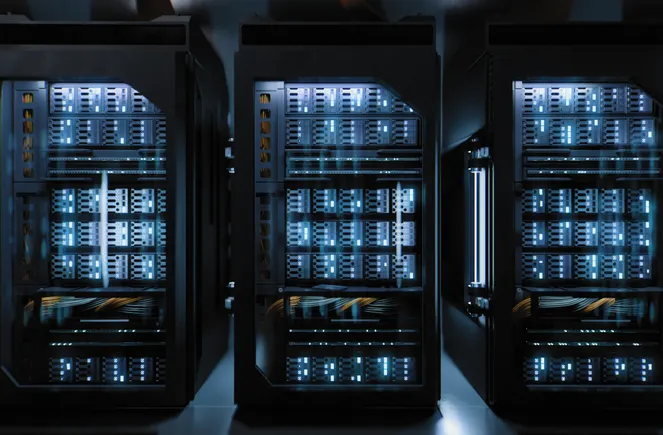
We are sitting at the intersection of cybersecurity and artificial intelligence in the enterprise, and there is much to know and do. Our goal is not just to keep you updated with the latest AI, cybersecurity, and other crucial tech trends and breakthroughs that may matter to you, but also to feed your curiosity.
Thanks for being part of our fantastic community!
In this edition:
Did You Know - Cybersecurity Trends for Second half of 2025
Article - Five Key Trends Shaping the State of Cybersecurity in H2 2025
Cybersecurity News & Bytes
AI Power Prompt
Social Media Image of the Week
Did You Know - Cybersecurity Trends for Second half of 2025
Did you know 72 % of organizations report increasing cyber risk, with ransomware remaining one of the top concerns? Source: WEF “Global Cybersecurity Outlook 2025”. World Economic Forum
Did you know nearly 47 % of organizations cite advances in generative AI (GenAI) by adversaries as their primary concern, enabling more sophisticated and scalable attacks? Source: WEF “Global Cybersecurity Outlook 2025”. World Economic Forum
Did you know credential theft attacks rose 71 % year-over-year, driven by compromised credentials being reused in phishing and brute force attacks? Source: IBM “Cybersecurity Trends: IBM Predictions for 2025”. IBM
Did you know credential theft surged 160 % in 2025, with vulnerabilities like exposed secrets on GitHub often taking ~94 days to remediate? Source: Check Point via ITPro “Credential theft has surged…” IT Pro
Did you know 65 % of global IT leaders believe their current cybersecurity defenses are outdated and cannot counter modern AI-powered cyber threats? Source: Lenovo survey via TechRadar
Did you know “malware-free” techniques comprised 79 % of detections in the CrowdStrike 2025 Global Threat Report, including stealthy social engineering and cloud intrusions? Source: CrowdStrike Global Threat Report 2025. CrowdStrike
Did you know nation-state actors are advancing social engineering tactics and targeting cloud storage and trusted services for malware delivery? Source: Google Cloud “Cloud Threat Horizons Report H2 2025”. Google Cloud

Five Key Trends Shaping the State of Cybersecurity in H2 2025
Leaders must understand AI threats, supply chain exposure, regulatory shifts, talent gaps, and proactive resilience to stay ahead.
As we move firmly into the second half of 2025 cybersecurity no longer feels like a tech issue alone it feels like a strategic imperative impacting every corner of business and society.
Threats are growing not just in volume but in sophistication. Regulations are catching up. Talent is scarce. Resilience is being redefined. Here are five key trends that leaders need to understand to navigate the evolving risk landscape.
AI threats becoming more autonomous and stealthy
Artificial intelligence is evolving into a tool for both defenders and adversaries. Malicious actors are using AI to develop adaptive malware that changes its behavior to evade detection. Phishing attacks are becoming hyper personalized using generative AI that tailors content based on public or private data sources. Autonomous agents are probing networks looking for weaknesses without human guidance. For defenders this trend demands not just reactive tools but proactive systems that can detect anomalies based on behavior not signature. Transparency and explainability in AI models also become critical so that security teams can trust alerts and reduce false positives.
Supply chain exposure growing from software to hardware
It used to be mainly about software dependencies and third party code libraries but in H2 of 2025 supply chain risks are expanding into hardware firmware and even cloud service configurations. Companies are finding that a device made in one country with firmware updated in another can hide vulnerabilities months or years before damage shows. Attackers exploit weak links in component sourcing or the firmware signing process. For cybersecurity leaders mapping the supply chain is no longer optional. Visibility into vendors patching practices firmware integrity and update channels becomes mission critical.
Regulatory shifts pushing new compliance and reporting burdens
Governments and regulators around the world are accelerating rules that require breach reporting minimum security standards and even AI usage frameworks. Companies will face more audits more penalties and more mandatory disclosure requirements. Privacy laws are expanding to include employee data and operational metrics. Cybersecurity rules will increasingly demand proof of risk assessments or impact analysis. Leaders must move swiftly to align with emerging laws across jurisdictions maintain readiness for audit and maintain transparency not just for regulators but for customers and partners.
Persistent talent gaps and evolving workforce expectations
Despite large budgets more organizations struggle to hire and retain cybersecurity talent. The gap is not just in quantity but in diversity of skills. Experts who understand AI risks or combined IT OT security are rare. Burnout is real among analysts working 24 hour shifts monitoring alerts and chasing threat actors. Workers want purpose growth learning opportunities and autonomy not just perks. To attract and retain talent leaders need to invest in continuous training mentorship clear career paths and healthier work life balance. Organizational culture matters more than ever.
Proactive resilience replacing perimeter based defenses
The classic model of strong perimeter walls and fixed defenses no longer suffices. Attacks now come from within cloud environments from trusted third parties and via insiders. Resilience involves designing systems to survive breaches recover quickly and maintain essential functionality. Practices like chaos engineering scenario planning redundant and segmented architecture regular backups and incident response rehearsals are becoming standards. Backup systems need isolation fallbacks need automation. Resilience becomes not something you hope you have but something you build for intentionally.
These trends interact and amplify one another. AI threats feed supply chain risks that regulation tries to contain. Talent gaps make proactive resilience harder to implement. Leaders who understand these trends know that cybersecurity in H2 2025 is not about reacting to incidents alone but about anticipating what comes next building endurance and embedding security into every part of the organization. The time to adapt is now.
Cybersecurity is no longer just about prevention—it’s about rapid recovery and resilience!
Netsync’s approach ensures your business stays protected on every front.
We help you take control of identity and access, fortify every device and network, and build recovery systems that support the business by minimizing downtime and data loss. With our layered strategy, you’re not just securing against attacks—you’re ensuring business continuity with confidence.
Learn more about Netsync at www.netsync.com
Artificial Intelligence News & Bytes 🧠
Cybersecurity News & Bytes 🛡️
AI Power Prompt
This prompt that will assist leaders in an organization in determining a cohesive strategy to account for important trends given the state of cybersecurity for a specific period of time.
#CONTEXT:
Adopt the role of an expert cybersecurity strategist and industry analyst. You will help organizational leaders determine a cohesive strategy that accounts for the most important cybersecurity trends within a specific period of time (e.g., the next 12 months, the next 3 years). Your task is to synthesize evolving threats, regulatory pressures, and technology shifts into a clear, actionable strategy that balances proactive defense with business agility.
#GOAL:
You will create a forward-looking cybersecurity strategy that enables leaders to anticipate risks, adapt to emerging threats, and align security priorities with organizational objectives, based on the key trends in the chosen timeframe.
#RESPONSE GUIDELINES:
Follow the structured step-by-step approach below:
Trend Identification & Analysis
Research and outline the most significant cybersecurity trends for the chosen period (e.g., rise of AI-based attacks, regulatory shifts, ransomware evolution, supply chain vulnerabilities, cloud security challenges, quantum risk).
Categorize trends into threats, opportunities, and regulatory shifts.
Impact Assessment
Evaluate how each trend could affect the organization’s operations, reputation, financials, and compliance obligations.
Prioritize trends based on relevance to the organization’s industry and assets.
Strategic Alignment
Align cybersecurity initiatives with organizational goals (growth, innovation, compliance, resilience).
Highlight trade-offs between innovation and security.
Defense & Resilience Strategy
Recommend adaptive defenses for trend-driven risks (e.g., AI-driven monitoring for AI threats, zero-trust for supply chain, encryption for quantum preparedness).
Propose multi-layered security architecture with future-proofing considerations.
Governance & Policy Development
Outline governance mechanisms for leaders to respond to evolving regulations and standards.
Suggest frameworks (e.g., NIST, ISO 27001, CIS Controls) adapted to anticipated trends.
Culture & Workforce Readiness
Recommend training and awareness programs aligned with emerging risks (deepfakes, AI phishing, insider threats).
Suggest leadership-level scenario exercises to prepare decision-makers for trend-driven crises.
Monitoring & Adaptation
Create a system for continuous monitoring of trend evolution and emerging technologies.
Define quarterly or annual reassessment checkpoints for adjusting strategy.
Example:
If the period of focus is “2025–2027,” and one trend is the adoption of post-quantum cryptography standards, the strategy should recommend:
Migration roadmaps for critical systems.
Vendor contract reviews for quantum readiness.
Employee training on encryption changes.
A risk communication plan for stakeholders.
#INFORMATION ABOUT ME:
My organization: [ORGANIZATION NAME]
Industry sector: [INDUSTRY SECTOR]
Size of organization: [ORGANIZATION SIZE]
Key assets to protect: [KEY ASSETS]
Timeframe of analysis: [TIMEFRAME]
Current cybersecurity maturity level: [CURRENT CYBERSECURITY MATURITY]
#OUTPUT:
Provide a Cybersecurity Strategic Foresight Report that includes:
Executive summary (top trends + leadership priorities)
Trend matrix (trend → likelihood → organizational impact)
Strategic recommendations categorized as short-term, mid-term, long-term
Governance and policy adjustments
Training and culture development plan
Adaptive monitoring framework for ongoing strategy refinement
Cybersecurity Image for the Week

Questions, Suggestions & Sponsorships? Please email: [email protected]
Also, you can follow me on X (Formerly Twitter) @mclynd for more cybersecurity and AI.

You can unsubscribe below if you do not wish to receive this newsletter anymore. Sorry to see you go, we will miss you!








